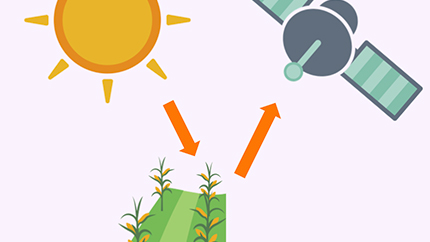
Growers generally make decisions on irrigation, fertilization and harvest based on rainfall, temperature, soil moisture or how the crop looks in the field. Yield estimates are also done by sight, or measured by weight at harvest. But, if growers could estimate yield accurately and early in the growing season, they could adjust their practices in hopes of increasing yields by harvest time. In a new study, DWFI’s Ivo Zution Gonçalves and Christopher Neale have found a simple, effective way to estimate yields early by measuring plant health through remote sensing.
Remote sensing uses satellites to measure physical characteristics of a crop area by its reflected and emitted radiation without contact with the plants or soil. It has been used to estimate yields in the past, but in this case, the satellite images are able to measure a plant’s vegetation index (VI) — the higher the index, the healthier the crop. Similarly, it can show the evapotranspiration and the plant’s chloroplast levels. These measurements, along with weather data, are used to estimate yield prior to harvest -- information a farmer can download from an app. This new approach using VI to estimate yield and growers’ easy access to results can help farmers manage their crop economically and make data-backed decisions throughout the growing season and during harvest.

